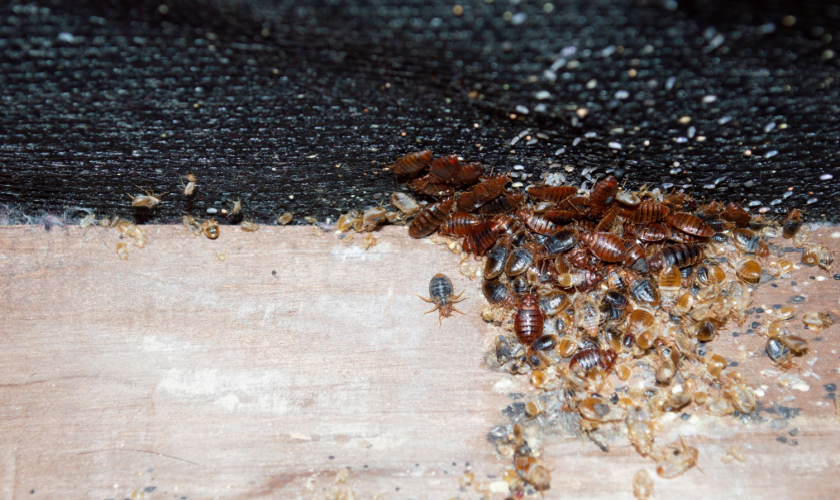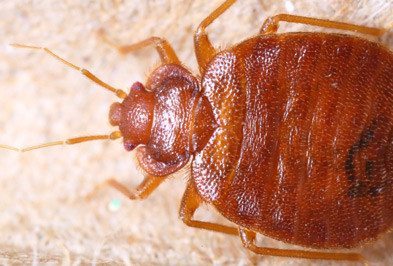Effective Bed Bug Exterminator: DC Solutions with Heat Treatment
Effective Bed Bug Exterminator: DC Solutions with Heat Treatment
Blog Article
Exploring the Scientific Research Behind Bed Bug Warmth Treatments as a Sustainable Parasite Management Method
One such approach that has obtained traction in current years is the usage of warm therapies to combat bed pest infestations. The complexities of just how heat successfully removes bed pests and the broader implications for lasting insect administration practices make this a subject worth exploring even more.
Bed Insect Warm Therapy Refine

Thermal Fatality Factor for Bed Bugs
Revealing bed pests to raised temperature levels past their thermal tolerance array is essential for achieving reliable obliteration in warmth therapy procedures. The thermal fatality point for bed insects refers to the temperature at which these pests can not endure. Study shows that bed bugs begin to die when revealed to temperature levels over 113 ° F(45 ° C) for a sustained duration. As the temperature raises, so does the death rate of bed pests. At around 118 ° F(48 ° C ), bed insects begin to die quickly, with a death price of nearly 99% within minutes of direct exposure. This shows the level of sensitivity of bed bugs to heats and highlights the performance of heat treatments in getting rid of problems. By reaching and maintaining temperatures above the thermal fatality factor for bed pests, parasite management professionals can make sure thorough removal of bed bug populations, including hard-to-reach areas where chemical therapies might be much less effective. Comprehending the thermal fatality factor for bed bugs is essential for carrying out effective warm therapy approaches and accomplishing lasting insect monitoring results.
Advantages of Heat Treatments
Having actually established the vital thermal death point for bed bugs, it is critical to currently check out the considerable advantages that warmth therapies use in effectively eradicating these resistant bugs. Warm treatments existing a number of essential advantages when contrasted to standard chemical approaches. One of the primary benefits is that warm can permeate deep right into crevices and splits where bed bugs conceal, making sure that also the most hard-to-reach locations are warmed to deadly temperature levels. This extensive strategy not only eliminates real-time bugs however also targets bed insect eggs, protecting against future infestations.
Furthermore, heat therapies are environmentally friendly and non-toxic, making them a sustainable insect administration approach. Unlike chemical pesticides, warmth therapies do not leave harmful residues that can position dangers to human wellness or the setting. This facet is particularly important in sensitive environments such as healthcare facilities, institutions, and suburbs where chemical use may not be preferable.
In addition, warmth treatments have a high success price in removing bed pest problems in a solitary treatment, decreasing the requirement for multiple check outs and lessening interruption to passengers. This effectiveness not only saves time and cash yet also provides comfort to those managing bed pest troubles.
Efficiency of Warmth Therapy

Warm therapies have the added advantage of killing bed pest eggs, which are frequently immune to traditional chemical treatments. Overall, the performance of warmth treatments in getting rid of bed pest infestations makes them a reliable and lasting parasite management strategy.
Lasting Parasite Management Advantages
Applying lasting parasite monitoring techniques offers long-term benefits for both the environment and public health and wellness. By making use of methods such as warm therapies for bug bed bug heat treatment control, we can decrease the dependence on unsafe chemical pesticides that can have damaging effects on environments and human health - exterminator. Lasting bug administration methods assist in preserving biodiversity by targeting details bugs without harming non-target microorganisms, thereby keeping a balanced ecological community
Moreover, sustainable bug management methods add to the general health and wellness of the general public. By reducing direct exposure to toxic chemicals utilized in traditional bug control approaches, heat therapies provide a more secure alternative for bug monitoring in domestic, business, and public spaces. This decrease in chemical use also assists in preventing pesticide deposits from infecting soil, air, and water, guarding environmental quality.
Final Thought
Finally, bed bug heat treatments have actually been revealed to be a sustainable and efficient bug monitoring strategy. The thermal death point for bed insects makes them prone to heat treatments, which have various advantages over standard chemical therapies. The effectiveness of heat treatments in getting rid of bed insect problems while minimizing environmental effect highlights the possibility of this approach as a lasting remedy for parasite control.
The bed pest heat treatment process includes increasing the temperature level within ravaged areas to a level that efficiently gets rid of bed pests and their eggs. By getting to and keeping temperature levels over the thermal fatality factor for bed pests, bug monitoring specialists can make certain comprehensive removal of bed pest populaces, consisting of hard-to-reach areas where chemical treatments might be less efficient. One of the key benefits is that warmth can penetrate deep right into fractures and holes where bed insects hide, making sure that also the most hard-to-reach locations are warmed to lethal temperatures. Unlike chemical treatments that may leave behind resistant populations, heat treatments offer a non-toxic and ecologically friendly remedy that can pass through deep right into furnishings, walls, and other hard-to-reach areas where bed pests conceal.
The thermal fatality factor for bed bugs makes them vulnerable to warm therapies, which have countless advantages over conventional chemical treatments.
Report this page